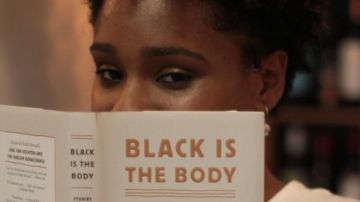Afro-Panameña Diva Green Creates Green Book for a Diasporic Traveler
Diva Green is continuing in the legacy of Harlem-based postal worker Victor Hugo Green

Photo: Instagram/igotyourblack_
Diva Green is continuing in the legacy of Harlem-based postal worker Victor Hugo Green. Creator of The Negro Motorist Green Book, commonly known as the Green Book, Green provided Black travelers with a guide to reach their destinations safely. When Green, the creator of Pan-African travel guide I Got Your Black, first learned of Victor H. Green and his annual guidebook, she knew there was a divine connection. Though there is no relation, like the late Green, she is invested in providing a resource to those looking to support Black businesses globally.
“I Got Your Black was inspired by my desire to combine travel with my need to support the entire African Diaspora in an impactful way,” shares Green with HipLatina.
Motivated by the social climate in 2014, particularly the killings of Michael Brown Jr. and Eric Garner, the Brooklyn-born, Afro-Panameña sketched a mola design, a multicolored, traditional art form of the Guna people, and the Black power fist. When asked by a friend to explain the concept, she responded, “It means as an Afro-Latino, I’m just as affected emotionally by this lack of justice and I support you.”
Through travel, Green sought to support the community. She began scouting businesses and communities in Jamaica and Panama, but it wasn’t until her second trip to Cuba that she decided to release a guide. Inconsistent access to the Internet made the research phase a bit challenging, but she was able to get several leads on Black-owned establishments, connecting with the African Diaspora Alliance, who then connected her to Cuban filmmaker Gloria Rolando.
“Once I met Mama Gloria it was kind of a domino effect. I found business after business,” shares Green. “The more challenging aspect came when I was face to face with my American privilege and the realities of how race functions in Cuba. As a Black American, I could easily go in and out of any hotel I wanted to, whether it was to buy a wifi card or to exchange currency. But if I was walking with a local Afro-Cuban, my friend would have to wait outside. That forced me to face privileges I didn’t know I would have upon arrival.”
Cultural nuances, access, and privilege, or lack thereof, are all ideologies Green navigated to create I Got Your Black. It hasn’t stopped her and, in fact, fuels her work. Separated by decades — and different social woes — both Greens chose to follow their calling.
Starting in 1936, the Green Book covered hotels and restaurants in the New York area but quickly grew to incorporate thousands of Black-owned or non-discriminatory establishments, including drug stores, beauty parlors, taverns, and service stations, across the country. The listings, which were organized by state and city, were aggregated from Black travelers and a reported 15,000 copies per year were sold.
The Green Book expanded to include safe spaces in Europe, Mexico, and the Caribbean. Though it ceased to be published a few years after Green’s death in 1960, its impact remains.
Green hopes to leave a lasting imprint with I Got Your Black. Her inaugural “I Got Your Black Havana Guide,” a 52-page resource featuring over 25 Afro-Cuban businesses in Havana, Cuba, is filled with a bevy of information.
“I want people to know that Cuba is a very Black country,” says Green. “Once you visit the island it’s impossible to deny the influence of its African ancestry. From the predominant religions to the food, music and visual arts, Blackness is weaved throughout the country’s national identity.”
While Green will launch other international guides, her recent one features businesses in her hometown of New York City. Launched about a week ago, I Got Your Black’s “Afro-Latinx Guide to NYC” provides business recommendations to over 20 Afro-Latinx owned spaces in Manhattan, Brooklyn, and the Bronx. Afro-Latina-run establishments like The Lit. Bar, the only bookstore in the Bronx, founded by Noëlle Santos; the Boogie Down Grind Café, co-owned by Sulma Arzu-Brown, and the Caribbean Cultural Center African Diaspora Institute (CCADI), founded by author and scholar Dr. Marta Moreno Vega, can be found amidst the pages. Contributors include Afro-Latinx creatives like Nydia Simone, founder of Blactina Media, and photographer Jazmin Samora.
In addition to exploring new places, readers can expect historical information like the Afro-Latinx role in the Harlem Renaissance, the impact of the Young Lords, and salsa’s connection to the city, as well as an accompanying playlist curated by Nicky Luna and “Privilege Tips,” which details ways to mindfully explore cultural spaces.
“I’m excited about how many people are going to learn from this guide and the potential it has to provoke change,” shares Green. “The goal is to help people explore global Black culture and be more mindful about the businesses they engage with, whether it’s abroad or at home. So, whether a reader ends up learning more Afro-Latinx history, or they decide to start visiting the recommended businesses, I’m looking forward to seeing people support NYC’s local Black-Latinx community and dive deeper into the nuances of our experiences.”
Both Cuba and New York City guides are available on I Got Your Black’s website.
(Edit note: Janel Martinez is a contributor to the “Afro-Latinx Guide to NYC.”)

















